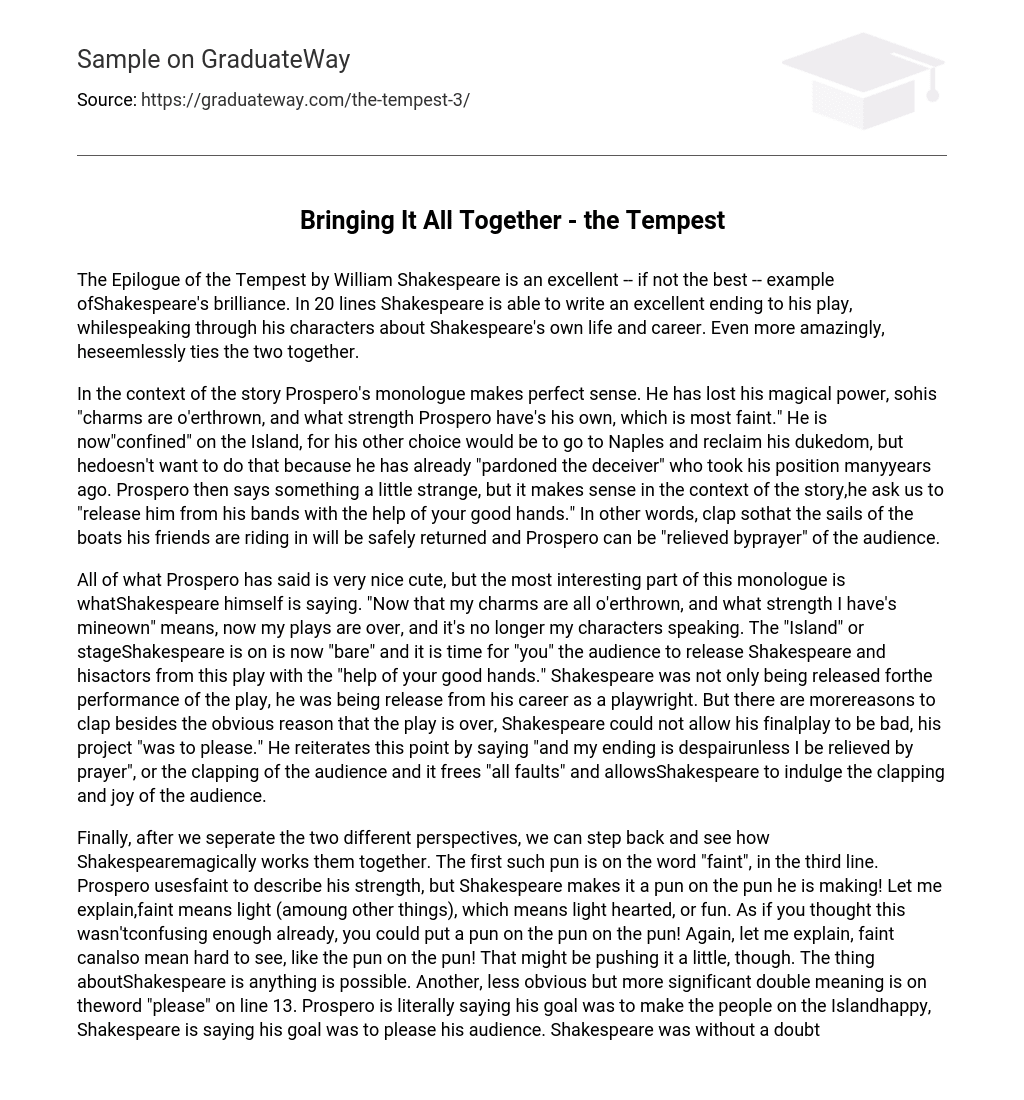The Epilogue of the Tempest by William Shakespeare is an excellent — if not the best — example ofShakespeare’s brilliance. In 20 lines Shakespeare is able to write an excellent ending to his play, whilespeaking through his characters about Shakespeare’s own life and career. Even more amazingly, heseemlessly ties the two together.
In the context of the story Prospero’s monologue makes perfect sense. He has lost his magical power, sohis “charms are o’erthrown, and what strength Prospero have’s his own, which is most faint.” He is now”confined” on the Island, for his other choice would be to go to Naples and reclaim his dukedom, but hedoesn’t want to do that because he has already “pardoned the deceiver” who took his position manyyears ago. Prospero then says something a little strange, but it makes sense in the context of the story,he ask us to “release him from his bands with the help of your good hands.” In other words, clap sothat the sails of the boats his friends are riding in will be safely returned and Prospero can be “relieved byprayer” of the audience.
All of what Prospero has said is very nice cute, but the most interesting part of this monologue is whatShakespeare himself is saying. “Now that my charms are all o’erthrown, and what strength I have’s mineown” means, now my plays are over, and it’s no longer my characters speaking. The “Island” or stageShakespeare is on is now “bare” and it is time for “you” the audience to release Shakespeare and hisactors from this play with the “help of your good hands.” Shakespeare was not only being released forthe performance of the play, he was being release from his career as a playwright. But there are morereasons to clap besides the obvious reason that the play is over, Shakespeare could not allow his finalplay to be bad, his project “was to please.” He reiterates this point by saying “and my ending is despairunless I be relieved by prayer”, or the clapping of the audience and it frees “all faults” and allowsShakespeare to indulge the clapping and joy of the audience.
Finally, after we seperate the two different perspectives, we can step back and see how Shakespearemagically works them together. The first such pun is on the word “faint”, in the third line. Prospero usesfaint to describe his strength, but Shakespeare makes it a pun on the pun he is making! Let me explain,faint means light (amoung other things), which means light hearted, or fun. As if you thought this wasn’tconfusing enough already, you could put a pun on the pun on the pun! Again, let me explain, faint canalso mean hard to see, like the pun on the pun! That might be pushing it a little, though. The thing aboutShakespeare is anything is possible. Another, less obvious but more significant double meaning is on theword “please” on line 13. Prospero is literally saying his goal was to make the people on the Islandhappy, Shakespeare is saying his goal was to please his audience. Shakespeare was without a doubt isone of the greatest authors of all time, this Epilogue clearly shows us that.
Category: English





